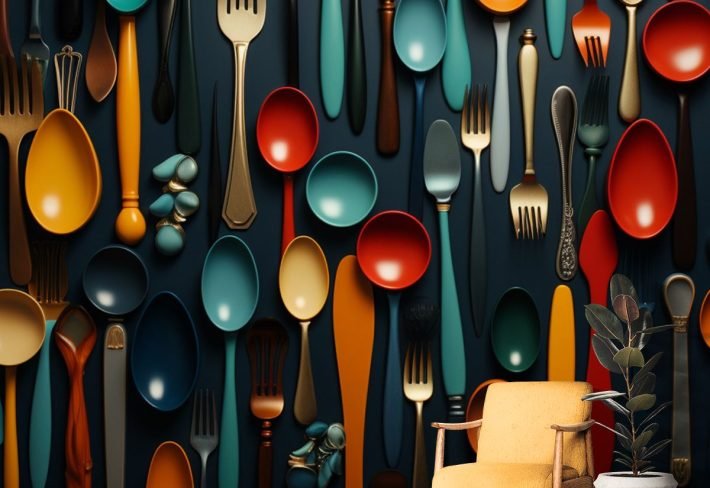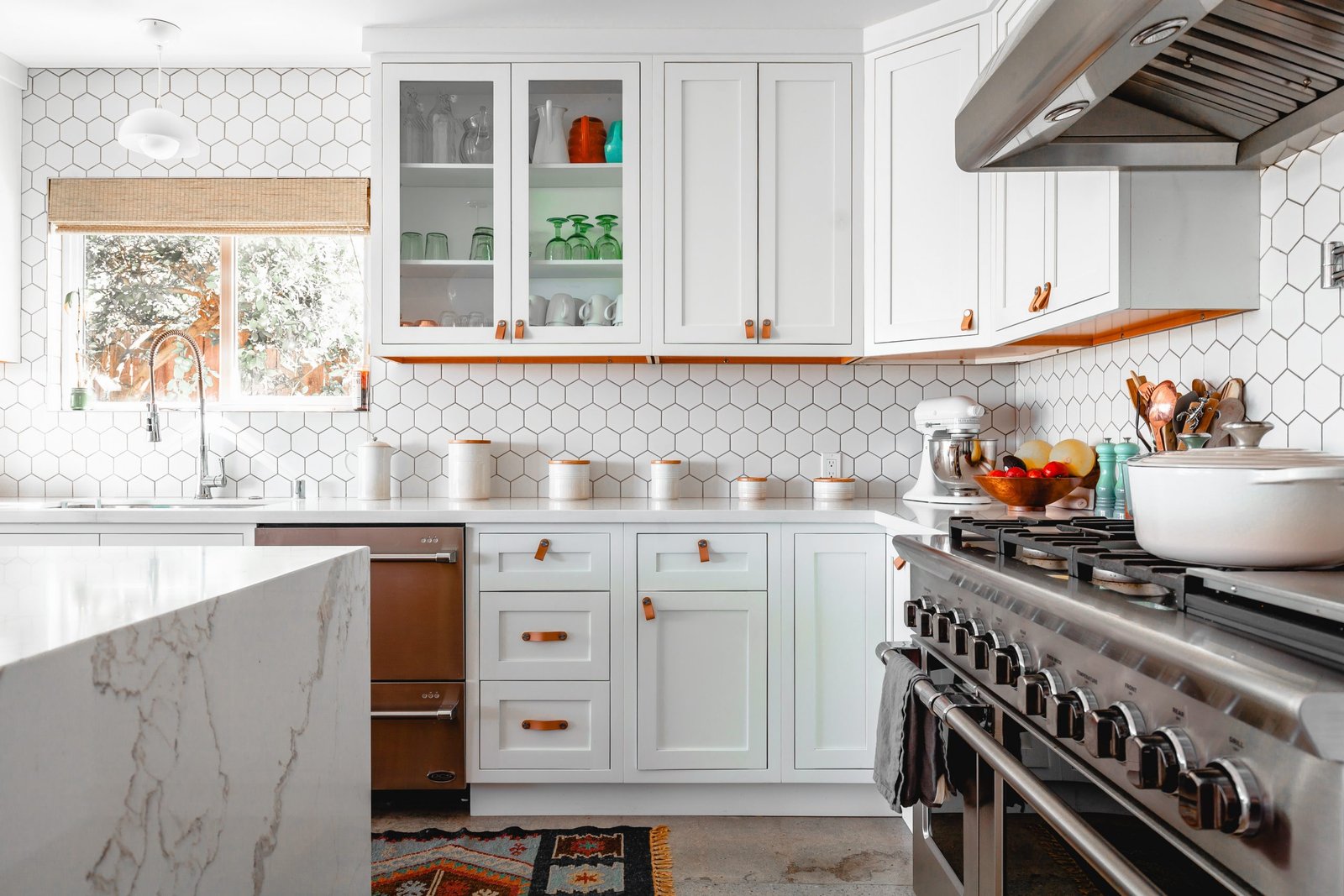The concept of kitchen wallpaper has witnessed a significant resurgence in popularity, marking a shift in how homeowners approach kitchen design. Once relegated to a bygone era, wallpaper is now celebrated for its versatility and ability to enhance both the aesthetic and functional aspects of a kitchen. Unlike traditional paint, which can often limit creativity, kitchen wallpaper offers a plethora of styles, patterns, and colors that can transform the overall ambiance of the cooking space. From vintage florals to modern geometric prints, the choices are virtually limitless, allowing homeowners to find the perfect design that resonates with their taste.
Beyond mere decoration, kitchen wallpaper serves practical purposes as well. It can act as a protective barrier against splashes and stains, particularly in high-traffic areas. Moreover, many contemporary wallpapers are designed to be washable and durable, making them an ideal choice for a room that experiences frequent moisture and heat exposure. This aspect not only enhances the longevity of the wallpaper but also simplifies maintenance, providing an excellent alternative to paint, which may require frequent touch-ups or reapplication.
The benefits of using kitchen wallpaper extend to its ability to introduce character and warmth, creating an inviting atmosphere for family and guests alike. Wallpaper can complement existing cabinetry and appliances, or even serve as a bold statement against neutral elements. The tactile quality of wallpaper adds depth and texture to the kitchen, surpassing the flat appearance of painted walls. As more homeowners seek to revamp their cooking spaces with personalized touches, kitchen wallpaper emerges as an advantageous choice that combines functionality with artistic expression, setting the stage for innovative design possibilities.
Choosing the Right Kitchen Wallpaper
Selecting the appropriate kitchen wallpaper is essential for achieving a cohesive and inviting atmosphere in your culinary space. When considering options, it is crucial to prioritize durability, as kitchens are often subject to a range of conditions that can affect wall coverings. Therefore, opting for wallpaper that can withstand wear and tear, as well as being resistant to stains and moisture, will ensure longevity and maintain aesthetic appeal.
Washability is another key factor to consider when choosing kitchen wallpaper. Certain materials, such as vinyl or specially treated papers, offer easy cleaning solutions, allowing you to quickly wipe away spills or splatters without damaging the design. This feature is particularly beneficial in high-traffic areas where cooking activities might create messes that require frequent maintenance.
Furthermore, the color scheme and pattern of your chosen wallpaper should enhance the overall style of the kitchen. A modern kitchen may benefit from sleek, geometric patterns in neutral tones, while a rustic kitchen might be best complemented by floral or textured designs that evoke a warm and welcoming vibe. Assessing the existing elements in your kitchen, such as cabinetry, countertops, and appliances, can guide you in selecting a wallpaper that harmonizes with your décor.
Inspiration for your kitchen wallpaper can be gleaned from various sources. Design magazines and online platforms like Pinterest or Instagram showcase an array of styles and trends that cater to different tastes. Additionally, visiting local showrooms provides the opportunity to view samples in person, helping you visualize how designs will look in your space. Engaging in these avenues can equip you with the insights needed to make an informed decision when selecting the ideal wallpaper for your kitchen.
Applying Kitchen Wallpaper: Tips and Techniques
Applying kitchen wallpaper is a rewarding home improvement project that can dramatically transform the look of your cooking space. To achieve a professional finish, adequate preparation is key. Begin by measuring the walls to determine how much wallpaper is required. This involves not just measuring the height and width of the wall but also accounting for any windows, doors, or other obstructions. Once measured, cutting the wallpaper to the desired lengths can prevent excess material and ensure a proper fit.

Before application, it is crucial to prepare the wall surface. Ensure that the walls are clean, smooth, and dry, as imperfections can affect adhesion. If using traditional paste wallpaper, apply the paste evenly to the back of the wallpaper, following the manufacturer’s guidelines. For peel-and-stick wallpaper, simply remove the backing and carefully position the wallpaper on the wall, allowing for minimal repositioning to avoid damaging the adhesive.
During the application process, aligning the wallpaper properly is essential. Start at a corner or a designated straight line for the first strip, using a level to ensure it is straight. Press the wallpaper firmly against the wall, removing any air bubbles with a smoothing tool or a soft cloth. If bubbles do appear, a pin can be used to release the trapped air, allowing for a smoother finish.
Common problems such as mismatching patterns, wrinkles, and peeling edges may arise. If you encounter a matching issue, consider adjusting the next strip to align correctly. For wrinkles, gently re-lift the wallpaper and reapply it, smoothing as you go. For peeling edges, use additional adhesive or wallpaper seam repair glue to secure loose areas. Ultimately, selecting the right installation method—whether peel-and-stick for beginners or traditional paste for more experienced DIYers—can significantly influence the overall success of your kitchen wallpaper project.
Maintaining Your Kitchen Wallpaper
Maintaining your kitchen wallpaper is essential for preserving its appearance and ensuring that it lasts for many years. Different types of wallpaper require specific care methods, making it crucial to identify your wallpaper type before undertaking any maintenance. Vinyl wallpaper, renowned for its durability and moisture resistance, is one of the most common choices for kitchens. To clean vinyl wallpaper, gently wipe it down with a damp sponge or cloth and a mild detergent. Avoid using abrasive cleaners, as they may damage the wallpaper’s surface.
Fabric wallpaper, while offering a unique aesthetic, is more delicate and requires careful attention. Regular dusting with a soft brush or vacuuming using an upholstery attachment will prevent accumulated dirt. For stains, a slightly damp cloth can often lift marks without harming the fabric. However, it is advisable to conduct a spot test in an inconspicuous area before applying any cleaning solution.
Spills are inevitable in the kitchen, and it is crucial to address them promptly. For liquid spills, blot the area with a clean, dry cloth as soon as possible to absorb excess moisture. Do not rub the area, as this may spread the stain further or damage the wallpaper. For stubborn stains, specialized stain removers designed for your wallpaper type may be used, keeping in mind to follow the manufacturer’s instructions carefully.
Over time, wear and tear may become evident in your kitchen wallpaper, such as peeling edges or fading colors. To touch up minor issues, use a wallpaper paste to reattach any loose sections. In cases of significant damage, replacing the affected panels or sections of wallpaper might be necessary. Always keep some matching wallpaper on hand for quick repairs. By following these maintenance tips, you can keep your kitchen wallpaper looking fresh and appealing, creating an inviting atmosphere for all who enter.

